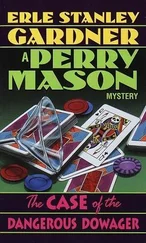Daniel Gardner - The Science of Fear
Здесь есть возможность читать онлайн «Daniel Gardner - The Science of Fear» весь текст электронной книги совершенно бесплатно (целиком полную версию без сокращений). В некоторых случаях можно слушать аудио, скачать через торрент в формате fb2 и присутствует краткое содержание. ISBN: , Издательство: Penguin Group (USA) Incorporated, Жанр: Психология, Политика, Прочая научная литература, на английском языке. Описание произведения, (предисловие) а так же отзывы посетителей доступны на портале библиотеки ЛибКат.
- Название:The Science of Fear
- Автор:
- Издательство:Penguin Group (USA) Incorporated
- Жанр:
- Год:неизвестен
- ISBN:9780525950622
- Рейтинг книги:3 / 5. Голосов: 1
-
Избранное:Добавить в избранное
- Отзывы:
-
Ваша оценка:
- 60
- 1
- 2
- 3
- 4
- 5
The Science of Fear: краткое содержание, описание и аннотация
Предлагаем к чтению аннотацию, описание, краткое содержание или предисловие (зависит от того, что написал сам автор книги «The Science of Fear»). Если вы не нашли необходимую информацию о книге — напишите в комментариях, мы постараемся отыскать её.
The Science of Fear — читать онлайн бесплатно полную книгу (весь текст) целиком
Ниже представлен текст книги, разбитый по страницам. Система сохранения места последней прочитанной страницы, позволяет с удобством читать онлайн бесплатно книгу «The Science of Fear», без необходимости каждый раз заново искать на чём Вы остановились. Поставьте закладку, и сможете в любой момент перейти на страницу, на которой закончили чтение.
Интервал:
Закладка:
When Saddam Hussein was executed at the end of 2006, official video was released by the Iraqi government. It appeared on television and the Internet minutes later. At the same time, another video clip appeared. Someone had smuggled a cell phone into the execution and recorded the entire hanging, including the taunts of guards and witnesses and the actual moment of execution that had been omitted from the official version. From phone to phone the video spread, and then to the Internet, putting uncensored images of a tightly guarded event in bedrooms, offices, and cafés in every country on earth.
But the really astonishing thing about that incident is that people didn’t find it astonishing. During the Vietnam War, television news reports were filmed, put in a can, driven to an airport, and flown out to be shown days after they were shot—and they provided a startling immediacy unlike anything previously experienced. But when the tsunami of 2004 crashed into the coast of Thailand, tourists e-mailed video clips as soon as they got to high ground—accomplishing instantly and freely what sophisticated television networks could not have done with unlimited time and money just thirty years before. In 2005, when Londoners trapped in the wreckage of trains bombed by terrorists used cell-phone cameras to show the world what they saw almost at the moment they saw it, the talk was almost exclusively of the content of the images, not their delivery. It was simply expected that personal experience would be captured and instantaneously distributed worldwide. In less than three human life spans, we went from a world in which a single expensive, blurry, black-and-white photograph astonished people to one in which cheap color video made instantly available all over the planet does not.
For the advance of humanity, this is a wondrous thing. For the promise it offers each individual to learn and grow, it is magnificent. And yet.
And yet the humans living amid this deluge of information have brains that believe, somewhere in their deepest recesses, that an image of our children is our children, that a piece of fudge shaped like dog poo is dog poo, and that a daydream about winning the lottery makes it more likely we will win the lottery.
We have brains that, in line with the Anchoring Rule, use the first available number as the basis for making an estimate about something that has absolutely nothing to do with the number. This is not helpful at a time when we are pelted with numbers like raindrops in a monsoon.
We have brains that defy logic by using the Rule of Typical Things to conclude that elaborate predictions of the future are more likely to come true than simple predictions. At a time when we are constantly warned about frightening future developments, this, too, is not helpful.
Most important, we have brains that use the Example Rule to conclude that being able to easily recall examples of something happening proves that it is likely to happen again. For ancient hunters stalking wildebeest on the savanna, that wasn’t a bad rule. In an era when tourists can e-mail video of a tsunami to the entire planet in less time than it takes the wreckage to dry, it has the potential to drive us mad. Should we fear exotic viruses? Terrorists? Pedophiles stalking kids on the Internet? Any of the other items on the long and growing list of worries that consume us? The population of humans on the planet is approaching seven billion. On any given day, by sheer force of numbers, there’s a good chance that some or all of these risks will result in people being hurt or killed. Occasionally, there will be particularly horrible incidents in which many people will die. And thanks to the torrent of instantaneous communications, we will all know about it. So, should we fear these things? Inevitably, Gut will attempt to answer that question using the Example Rule. The answer will be clear: Yes. Be afraid.
One of the most consistent findings of risk-perception research is that we overestimate the likelihood of being killed by the things that make the evening news and underestimate those that don’t. What makes the evening news? The rare, vivid, and catastrophic killers. Murder, terrorism, fire, and flood. What doesn’t make the news is the routine cause of death that kills one person at a time and doesn’t lend itself to strong emotions and pictures. Diabetes, asthma, heart disease. In American surveys conducted in the late 1970s by Paul Slovic and Sarah Lichtenstein, the gaps between perception and reality were often stunning. Most people said accidents and disease kill about equally—although disease actually inflicts about seventeen times more deaths than accidents. People also estimated that car crashes kill 350 times more people than diabetes. In fact, crashes kill only 1.5 times as many. How could the results be otherwise? We see flaming wrecks every day on the news but only family and friends will hear of a life lost to diabetes.
Considerable research has tied skewed risk perception to skewed coverage in the news, but information and images pour out of more sources than newspapers, magazines, and suppertime broadcasts. There are also movies and television dramas. These are explicitly designed to be emotional, vivid, and memorable. And risk is a vital component of countless dramas—primetime television would be dead air if cop shows and medical dramas disappeared. Based on what psychologists have learned about the Example Rule, they should have just as powerful an effect on our judgments about risk as the news does. They may even have greater impact. After all, we see movies and TV dramas as nothing more than entertainment, so we approach them with lowered critical faculties: Gut watches while Head sleeps.
Unfortunately, almost no research has examined how fiction affects risk perception. One recent study, however, found just what psychologists would expect. Anthony Leiserowitz of Decision Research (a private research institute founded by Paul Slovic, Sarah Lichtenstein, and Baruch Fischhoff) conducted cross-country surveys in the United States before and after the release of The Day After Tomorrow , a disaster film depicting a series of sudden, spectacular catastrophes unleashed by global warming. The science in The Day After Tomorrow is dubious, to say the least. Not even the most frightening warnings about the effects of global warming come close to what the movie depicts. But that made no difference to the influence of the film. Across the board, more people who saw the film said they were concerned about global warming, and when they were asked how likely it was that the United States would experience various disasters similar to those depicted in the movie—flooded cities, food shortages, Gulf Stream shutdown, a new Ice Age, etc.—people who had seen the movie consistently rated these events more likely than those who didn’t. The effects remained even after the numbers were adjusted to account for the political leanings of respondents.
Of course, Head can always step in, look at the evidence, and overrule. As we have seen, it routinely does not. But even if it did, it could only modify or overrule Gut’s judgment, not erase it. Head can’t wipe out intuition. It can’t change how we feel .
Most sociologists trace the beginning of the Western countries’ obsession with risk and safety to the 1970s. That was also when the near-exponential growth in media began and the information floodwaters started to rise. Of course, the fact that these two profound shifts started together does not prove they are connected, but it certainly is grounds for suspicion and further investigation.
4
The Emotional Brain
It is remarkable how many horrible ways we could die. Try making a list. Start with the standards like household accidents and killer diseases. After that, move into more exotic fare. “Hit by bus,” naturally. “Train derailment, ” perhaps, and “stray bullet fired by drunken revelers.” For those with a streak of black humor, this is where the exercise becomes enjoyable. We may strike a tree while skiing, choke on a bee, or fall into a manhole. Falling airplane parts can kill. So can banana peels. Lists will vary depending on the author’s imagination and tolerance for bad taste, but I’m quite sure that near the end of every list will be this entry: “Crushed by asteroid.”
Читать дальшеИнтервал:
Закладка:
Похожие книги на «The Science of Fear»
Представляем Вашему вниманию похожие книги на «The Science of Fear» списком для выбора. Мы отобрали схожую по названию и смыслу литературу в надежде предоставить читателям больше вариантов отыскать новые, интересные, ещё непрочитанные произведения.
Обсуждение, отзывы о книге «The Science of Fear» и просто собственные мнения читателей. Оставьте ваши комментарии, напишите, что Вы думаете о произведении, его смысле или главных героях. Укажите что конкретно понравилось, а что нет, и почему Вы так считаете.












